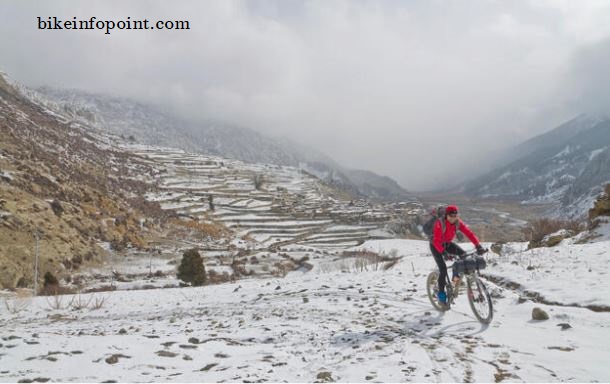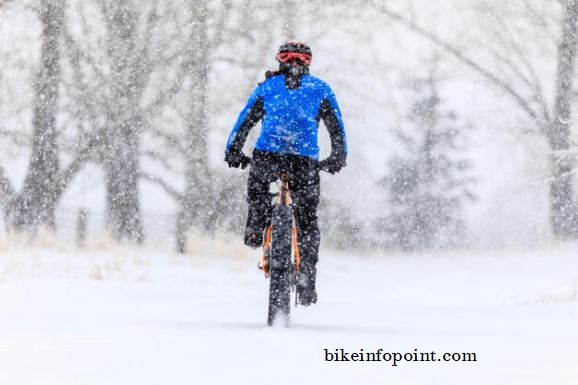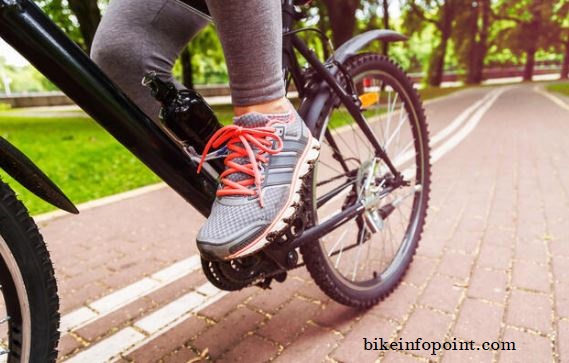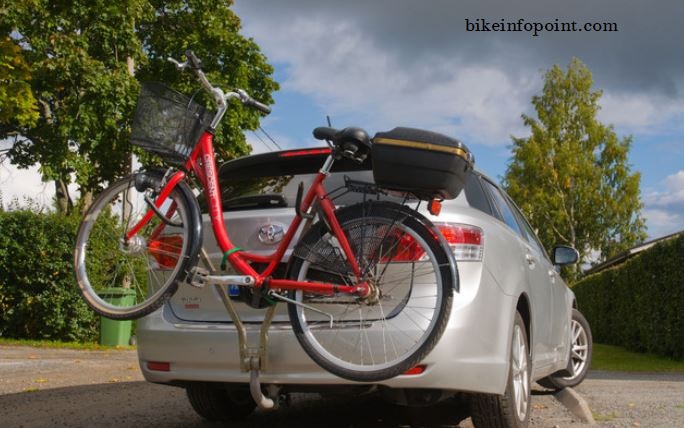
Can You Ride a Bike in the Snow
“Can you ride a bike in the snow?”, is an interesting and timely question for anyone who loves cycling and lives in an area with cold and snowy winters. Winter biking is becoming increasingly popular among outdoor enthusiasts. But many people are unsure about whether it’s safe, practical, or even possible to ride a bike in the snow.
Winter biking has its pros and cons, and it’s important to understand both before deciding whether to try it. On the one hand, biking in the snow can be a fun and exhilarating experience. It allows you to enjoy the beautiful winter scenery and get some great exercise while avoiding the traffic and parking headaches that come with driving in snowy conditions. For some people, it can even be faster than walking or driving in certain conditions, particularly if they have a shorter commute or live in an area with well-maintained bike paths.
On the other hand, winter biking also comes with some risks and challenges. Riding a bike in the snow requires more effort and skill than regular biking, and it can be more dangerous due to the increased risk of accidents. Snow and ice can make roads and paths slippery, and it can be harder to control your bike or come to a stop. Winter weather can also cause damage to bike components, particularly if they’re not designed for cold and wet conditions.
Despite these challenges, winter biking can be a rewarding and enjoyable activity if you’re properly prepared and take the necessary precautions. By choosing the right bike, equipping it with appropriate gear, and following safety tips and techniques for winter biking, you can stay safe, warm, and comfortable while exploring the winter wonderland on two wheels.
Table of Contents
TogglePros and Cons of Riding a Bike in the Snow

Certainly! When considering whether or not to ride a bike in the snow, it’s important to weigh the pros and cons of this activity. Here are some more details about the advantages and disadvantages of winter biking:
A. Pros
Great exercise: Biking is an excellent form of exercise that can help you stay fit and healthy, and riding a bike in the snow can provide an even greater workout. The cold weather can increase your heart rate and metabolism, and the added resistance of snow and ice can help you build strength and endurance. Plus, biking in the snow can be a fun and challenging way to stay active during the winter months.
Opportunity to enjoy winter scenery: Winter can be a beautiful season, and biking in the snow can allow you to experience the beauty of the winter landscape up close. From snow-covered trees to frozen lakes, there are many stunning sights to take in while biking in the snow. Riding a bike can also allow you to explore areas that may be harder to access by car or on foot, giving you a unique and rewarding winter experience.
May be faster than walking or driving in certain conditions: Biking in the snow can be faster and more efficient than walking or driving in certain conditions. If you have a shorter commute or live in an area with well-maintained bike paths, biking in the snow may be the quickest way to get around. Plus, you won’t have to deal with the traffic or parking hassles that come with driving in snowy conditions.
B. Cons
Increased risk of accidents: Snow and ice can make roads and paths slippery, which can increase the risk of accidents. Biking in the snow requires more effort and skill than regular biking, and it can be more dangerous due to the added risks of slipping or sliding. You should take extra care when biking in the snow, wear appropriate safety gear, and follow best practices for winter biking to reduce your risk of accidents.
Requires more effort and skill than regular biking: Biking in the snow can be more challenging than regular biking, and it requires more effort and skill to control your bike in slippery conditions. It can be tiring to pedal through snow and slush, and it can be harder to balance and maneuver your bike on slippery surfaces. You may need to adjust your riding style and technique to accommodate winter conditions, and it can take some practice to get comfortable with winter biking.
May damage bike components: Winter weather can be harsh on bike components, particularly if they’re not designed for cold and wet conditions. Snow and ice can cause rust, wear down brake pads, and damage the drivetrain and other parts of your bike. You should take extra care to maintain and protect your bike during the winter, and consider using a bike specifically designed for winter riding.
How to clean a bike chain with household products
Preparation for Winter Biking
If you’ve decided to try winter biking, there are several key preparations you should make to ensure a safe and enjoyable experience. Here are some more details about the three topics in preparation for winter biking:
A. Choosing the Right Bike
Consider a fat tire bike: Fat tire bikes are designed specifically for winter riding and can handle snow and ice much better than standard bikes. They have wide tires with low pressure that can create better traction on slippery surfaces.
Choose a bike with good brakes: Brakes are especially important in winter biking when surfaces can be slippery. Consider getting a bike with disc brakes, which perform better than rim brakes in snowy and wet conditions.
Opt for a durable frame: A durable frame can withstand the harsh winter weather, and a frame made of steel or aluminum is a good choice for winter biking.
B. Equipping Your Bike with Appropriate Gear
Install fenders: Fenders can help protect you from the slush and mud that can come with winter biking. It can also protect your bike from debris and moisture that can cause rust and wear.
Use appropriate tires: The right tires can make a big difference in how your bike performs in the snow. Studded tires can provide extra traction on icy surfaces, and wider tires with low pressure can help your bike float over snow and slush.
Dress appropriately: Dressing in layers is key to staying warm and comfortable while winter biking. Choose fabrics that wick moisture away from your skin, and wear a windproof and waterproof outer layer to protect you from the elements.
C. Safety Tips and Techniques for Winter Biking
Reduce your speed: Slow down and take extra care when biking in the snow. Winter conditions can be unpredictable, and it’s important to give yourself extra time and space to react to hazards.
Use lights: Winter days are shorter, and it’s important to be visible to drivers and other bikers. Use lights on the front and back of your bike to increase your visibility.
Stay alert: Winter biking can be more challenging than regular biking, and it’s important to stay alert and focused while riding. Keep an eye out for hazards like ice patches, and be prepared to brake and steer to avoid them. Also, be sure to keep your eyes on the road to avoid distractions like your phone or other devices.
By taking the time to properly prepare yourself and your bike for winter biking, you can enjoy a safe and fun winter cycling experience.

Tips for Riding a Bike in the Snow
If you’re planning to ride a bike in the snow, it’s important to adjust your riding technique to accommodate winter conditions. Here are some tips to help you ride your bike safely and effectively in the snow:
A. Riding Techniques for Snowy Conditions
Lean back and lower your seat: When riding in snow or on slippery surfaces, it’s important to shift your weight back on the bike. This can help you maintain traction and avoid sliding out. You may also want to lower your seat to help you reach the ground more easily if you need to put a foot down.
Use a lower gear: Riding in a lower gear can help you maintain control of your bike in snowy conditions. It can also make it easier to pedal through snow and slush, which can be more difficult than riding on a dry surface.
Brake carefully: Braking in snow or on ice can be tricky, as it can cause your bike to slide. Try to avoid sudden braking, and use your back brake more than your front brake to help maintain control. You can also try dragging your feet on the ground to help slow down.
B. Tips for Staying Warm and Comfortable
Layer up: Dressing in layers is key to staying warm while biking in the snow. Wear a moisture-wicking base layer, an insulating mid-layer, and a windproof and waterproof outer layer.
Protect your extremities: Your fingers, toes, and ears are especially susceptible to the cold, so be sure to wear gloves, warm socks, and a hat or headband to protect them.
Stay hydrated: It’s important to stay hydrated even in cold weather, so be sure to bring water with you on your ride. You can also drink warm beverages like tea or hot chocolate to help keep you warm from the inside out.
Take breaks: Riding in the snow can be tiring, so be sure to take breaks as needed. Find a warm and dry spot to rest and refuel before continuing on your ride.
By following these tips, you can stay safe and comfortable while biking in the snow. Always take extra care and caution in winter conditions, and don’t be afraid to adjust your riding style or take a break if needed.


